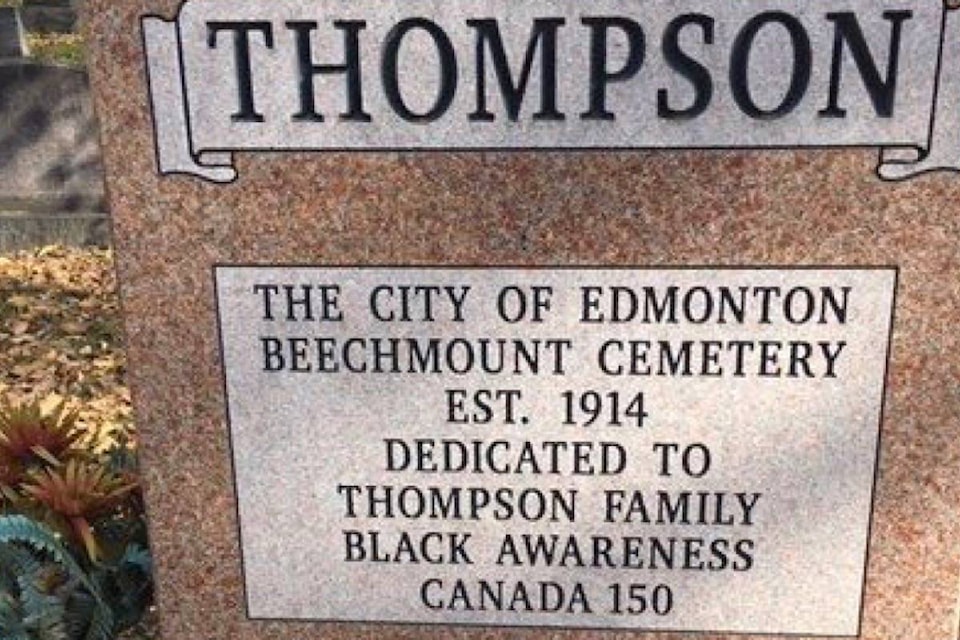February is Black History Month in Alberta. It is a time to reflect on the history and contributions of a relatively small, but important, group in our province.
The first blacks began arriving in Alberta about 140 years ago. Among the first blacks to live in central Alberta were Edmond (George) and Hattie Perry Thompson.
Edmond was born in Missouri, the son of Virginia slaves. Hattie was born in 1847 in Louisville, Ky., and was originally a slave.
In later years, she recalled her childhood as “we never got nothing but whippings. It weren’t no good to try and get away because they set the bloodhounds after us.”
More than 25 years after emancipation, Ed and Hattie met and married in 1890 in Nebraska. In May 1894, they had a daughter, whom they named Latechange, not surprisingly given the relatively advanced age at which they became parents.
After leaving Nebraska and living for a while in North Dakota, the Thompsons moved to southern Alberta, where Ed found work on the local ranches. In 1904, they decided to get their own place. They consequently moved to the Magic/Earlville district southeast of Ponoka, where they took out a homestead.
They were well received in their new community due to their integrity, deep religious faith and strong work ethic. At one point, the Ponoka Herald referred to Ed Thompson as “a number one citizen.”
To help earn some cash income, Ed sold lumber and firewood he had cut by hand from the forested areas of his new farm. He also worked in construction and was reported as working as a plasterer in places such as Morningside.
Tragedy struck in early February 1907. Deep snow forced Ed to take a detour from his usual route to the Earlville store and post office. At the store, the storekeeper became concerned Ed looked unwell and exhausted and encouraged him to stay overnight before heading home. Ed declined, as he said that they were virtually out of supplies back at the homestead.
Tragically, Ed became completely exhausted on his way home with his heavy load of supplies, which included a 90-pound bag of flour. He collapsed in the snow. He was later found frozen to death, less than 300 yards from a community hall and less a kilometre from his home.
After Edmond’s death, Hattie found it impossible to keep up the homestead on her own. Hence, she and Latechange moved to Ponoka.
Hattie took in boarders, did laundry and cleaned other people’s houses to make ends meet, while Latechange finished school. When Latechange became old enough, she also began work as a housekeeper and laundress.
In 1918, Latechange gave birth to a daughter she named Alice, but who was better known by her nickname, Nellie.
Latechange must have suffered significant complications from the childbirth, as a cemetery plot was acquired for her at the Forest Lawn Cemetery in Ponoka. However, according to the Alberta death registry, she did not die until 1922.
In the mid-1920s, Hattie and granddaughter Nellie moved to Edmonton, where it was thought employment prospects would be better. However, the following years remained a significant financial struggle.
Aug. 24, 1936, Hattie Thompson died just short of her 89th birthday, although various news reports gave her age as being between 99 and 104. Her sole surviving relative was given as her granddaughter Alice (Nellie).
There was extensive news coverage because Hattie had been born as a slave, but also because both the Alberta and Edmonton municipal governments declined to provide her with anything other than a pauper’s funeral and grave.
Katherine Sampson, nicknamed Mammy, became highly indignant about that. She made personal appeals to Premier William Aberhart and Mayor Joseph Clarke for assistance.
When those failed (other than a personal donation of $2.50 from Clarke), Sampson raised enough money from friends and businesses for the funeral and cemetery plot in the Beechmount Cemetery.
There is now a large memorial plaque in the Beechmount Cemetery to honour and provide the life story of Hattie, Edmond, Latechange and Alice (Nellie) Thompson.
Red Deer historian Michael Dawe’s column appears Wednesdays.
